Here’s how I repair plaster cracks in old plaster over wood lath –
All cracks get raked out with a scraper – This wall is 1841 –
View Image
Usually down to the wood, unless it’s really tight –
View Image
All over the room – dry-brush out all the crumbs, or vacuum –
View Image
Even fairly large areas –
View Image
Next, get this stuff, and thin it just enough to spray – I used to use Hy-Bond, but I can get this without driving to Atlanta (Depot)
View Image
Spray and back-brush, going out a few inches –
View Image
Soon as it’s mostly dry, pack in stiff 5-min mud –
View Image
As it hardens, it will shrink down. Tomorrow I’ll skim it again –
View Image
Really stiff for the big areas so it won’t sag; pack it into the lath –
View Image
After the final filling coat of 5-min, the wall gets scraped clean of any bumps or debris, and then all joints get taped with paper tape and bucket mud, well feathered. That part gets left to professionals!
Forrest
Edited 10/31/2007 1:16 pm by McDesign


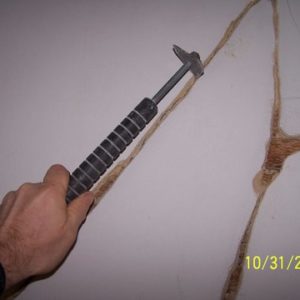
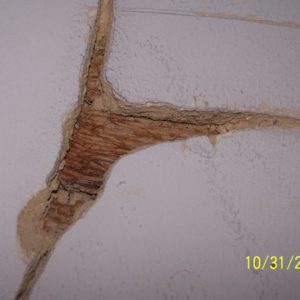
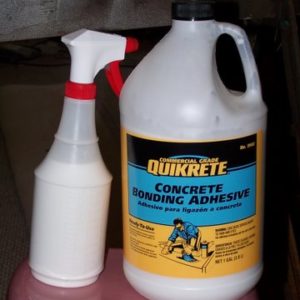
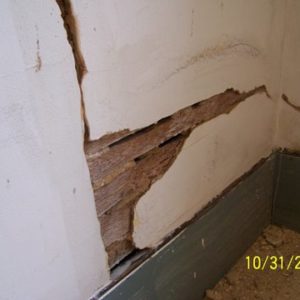
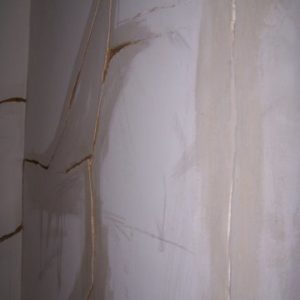
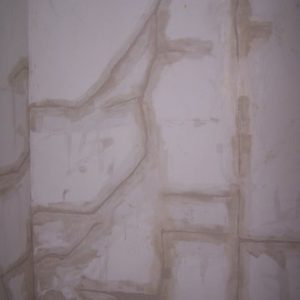
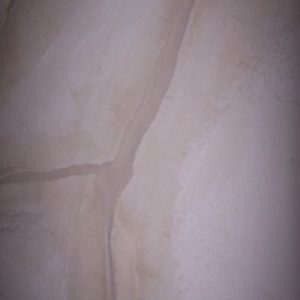
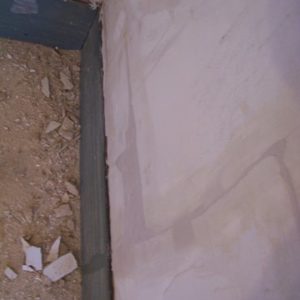



















Replies
That's a nice thread. Pretty much how I do it, except that the final taping & mudding is done by the same sety of DIY hands that does the rest -
Excellent photos! Nice old house, too.
How important is using the bonding agent?
Angus
I believe it's absolutely imperative. My experience has been that if it's not used, I can lift out the new mud, or just peel off the tape, a year later. Plus, you get two cracks for one - on either side of the tape, usually.
I think the old plaster sucks out the moisture so quickly that the surface bond is weak or non-existent.
Probably like painting the end grain of wood with glue first, before glue-up of whatever.
For really bad walls, where the top layer is ancient calcimine (sp?) paint, I'll spray the whole wall with the thinned bonding agent, and skim-coat it thinly with bucket mud.
Forrest
I can't find the link....But Tom Silva showed a new method of fixing the plaster walls on "Ask this old house" a couple of weeks ago. He drilled holes thru the plaster all around the cracks, then squirted special glue into the holes, then used plastic caps and drywall screws to pull the plaster and wood together, next day remove screws and apply drywall compound. Seemed like a good system.You get out of life what you put into it......minus taxes.
Marv
Drilling holes to the lath and injecting a capillary type glue is not really a new technique. In plaster conservation and restoration, that's the way it has been done for many years. If you can get to the lath from the back part,drill the hole and inject, all the better.There are special glues made for this very purpose, they are very liquid and get sucked into the space between the lath and plaster When I worked as a conservator the one we used was called Roplex and we used a large hypodermic that they use in treating bovines.
http://www.bigwallys.us/tv.htm
Thats it.You get out of life what you put into it......minus taxes.
Marv
I've fixed several rooms in our old house without having used the bonding agent (because I didn't know about it). Just opened, cleaned the cracks and put in Durabond. 4 years on, with lots of movement in the house, there doesn't appear to be any re-cracking. Now the mix I used wasn't as dry as you are describing, maybe the extra water in the mix kept it from drying out too fast?
i do similar, but also mix in some bonding agent with the water when mixing up the filler. Plaster Weld is the brand I use because the local Kamco stocks it. Their directions say to add some to the water, but that is with straight plaster of paris as the filler, not hot mud as you use, which maybe already has some kind of bonding agent built in. it's been a while, but i just used the plaster, every thing else the same and those joints have been tight for 20 years.
Hope this helps. Rich
OK, I realize I'm a heretic, but at what point do you just rip it all off and drywall? Especially when all those nice exposed studs will make for easy wiring and all that old oak lath makes nice kindling.
jt8
"God is a comedian playing to an audience too afraid to laugh." --Voltaire
1841?
Sherman's boys must have been out of matches, when they came foraging and a-burning!
Yeah - we didn't get burned, or the couple towns around us - various stories why.
Forrest
How far are you from Monticello Ga? I have a buddy there and he said once, that they( that area) JUST barely escaped the fires.
Cool plaster fix, lucky for me we just had logs and wood panels over them inside..prolly couldn't afford plaster here.Spheramid Enterprises Architectural Woodworks
"If you want something you've never had, do something you've never done"
I'd encourage you to keep on practising those drywall finishing skills. I've only had DIY experience, but I'm finally at the point where I wouldn't bother getting a professional for any job on my house. Skim coating three bedrooms and kitchen were great practice.
Edited 11/1/2007 7:54 pm ET by Biff_Loman